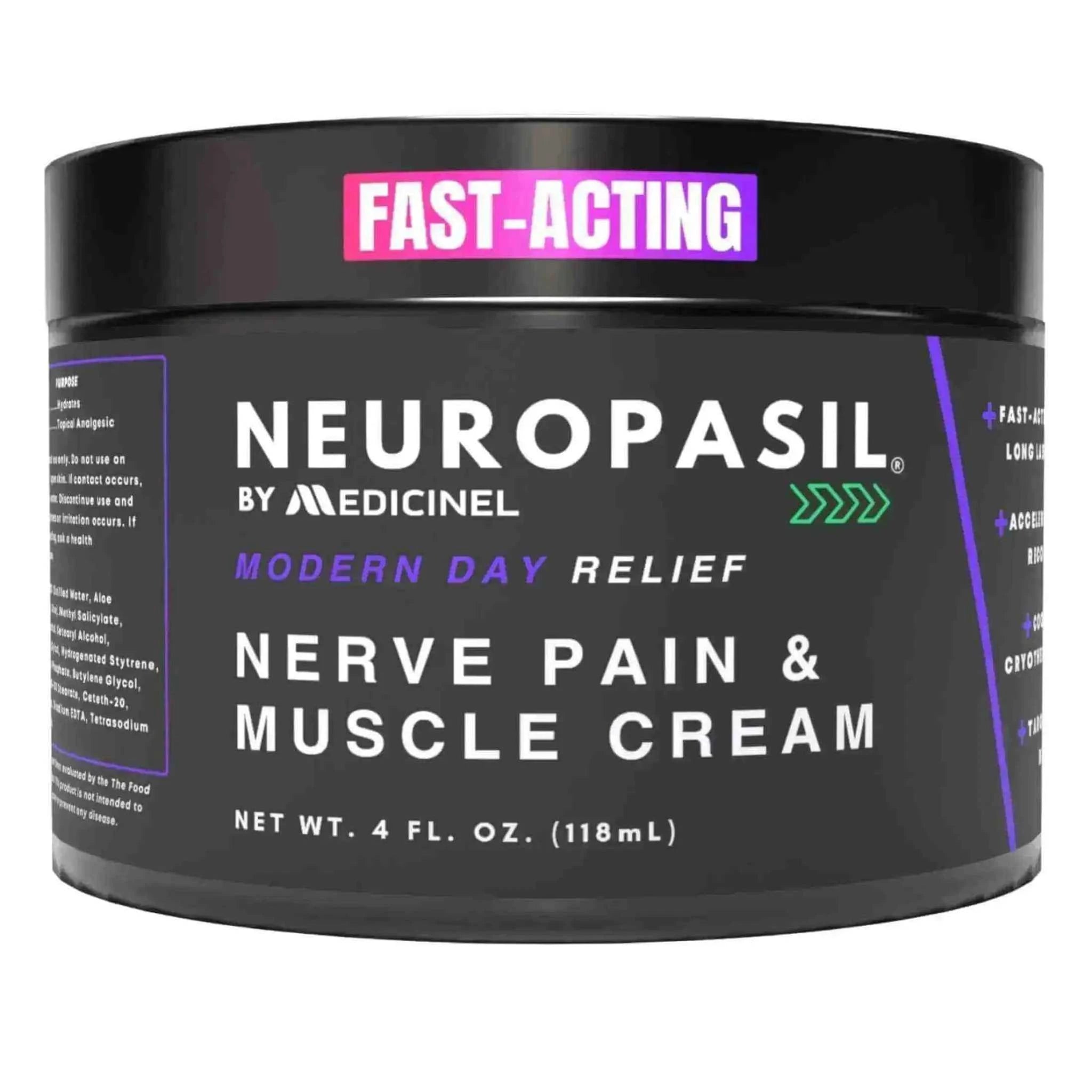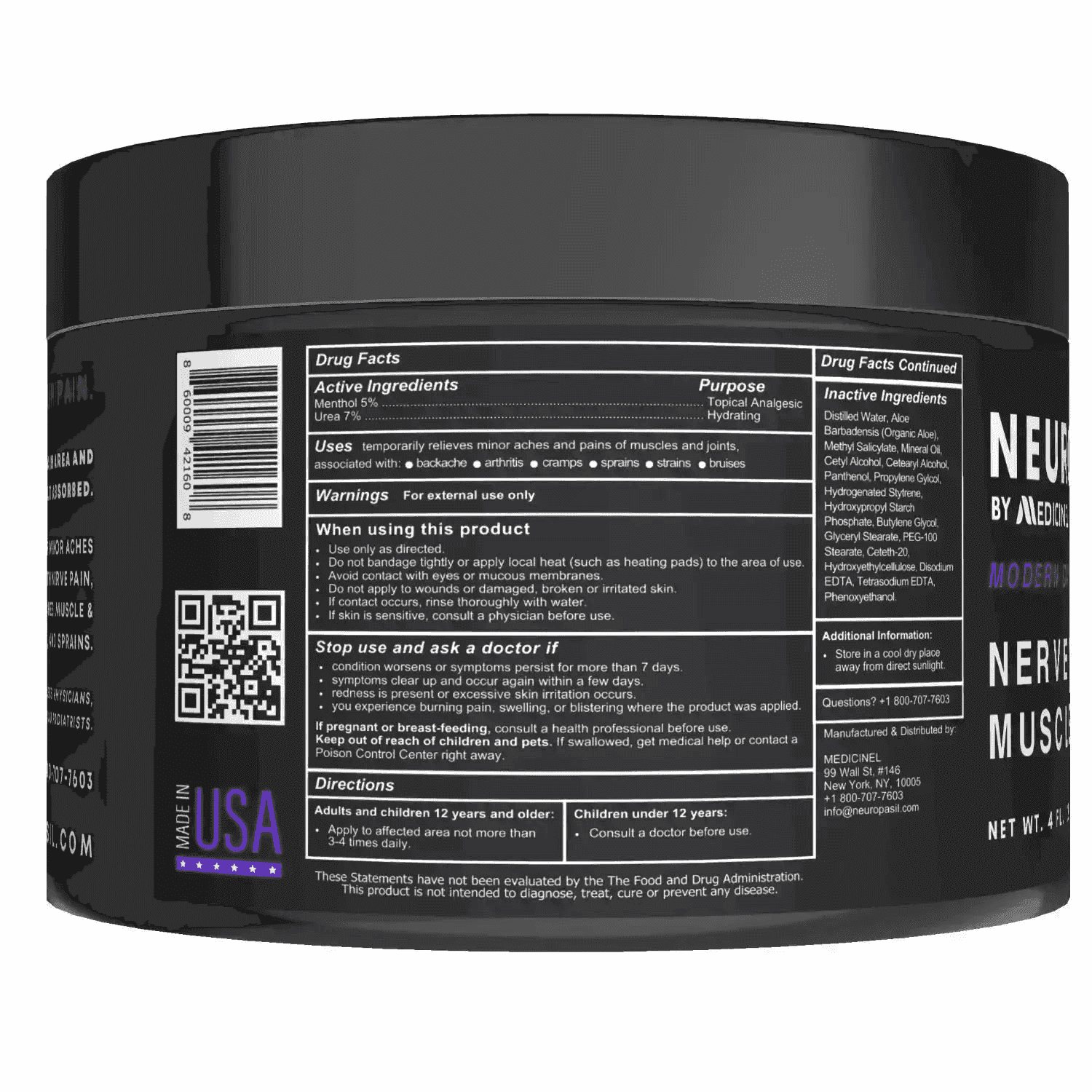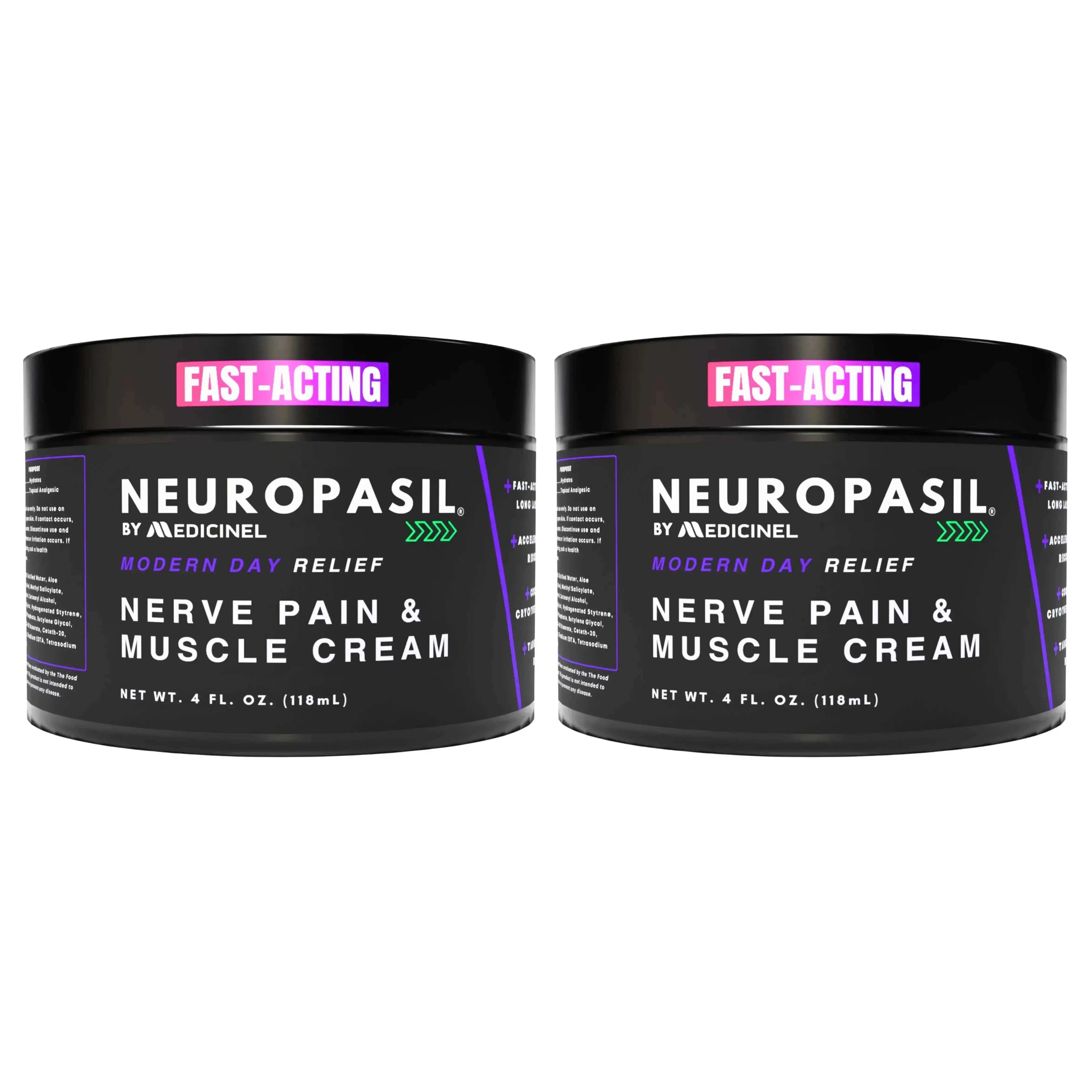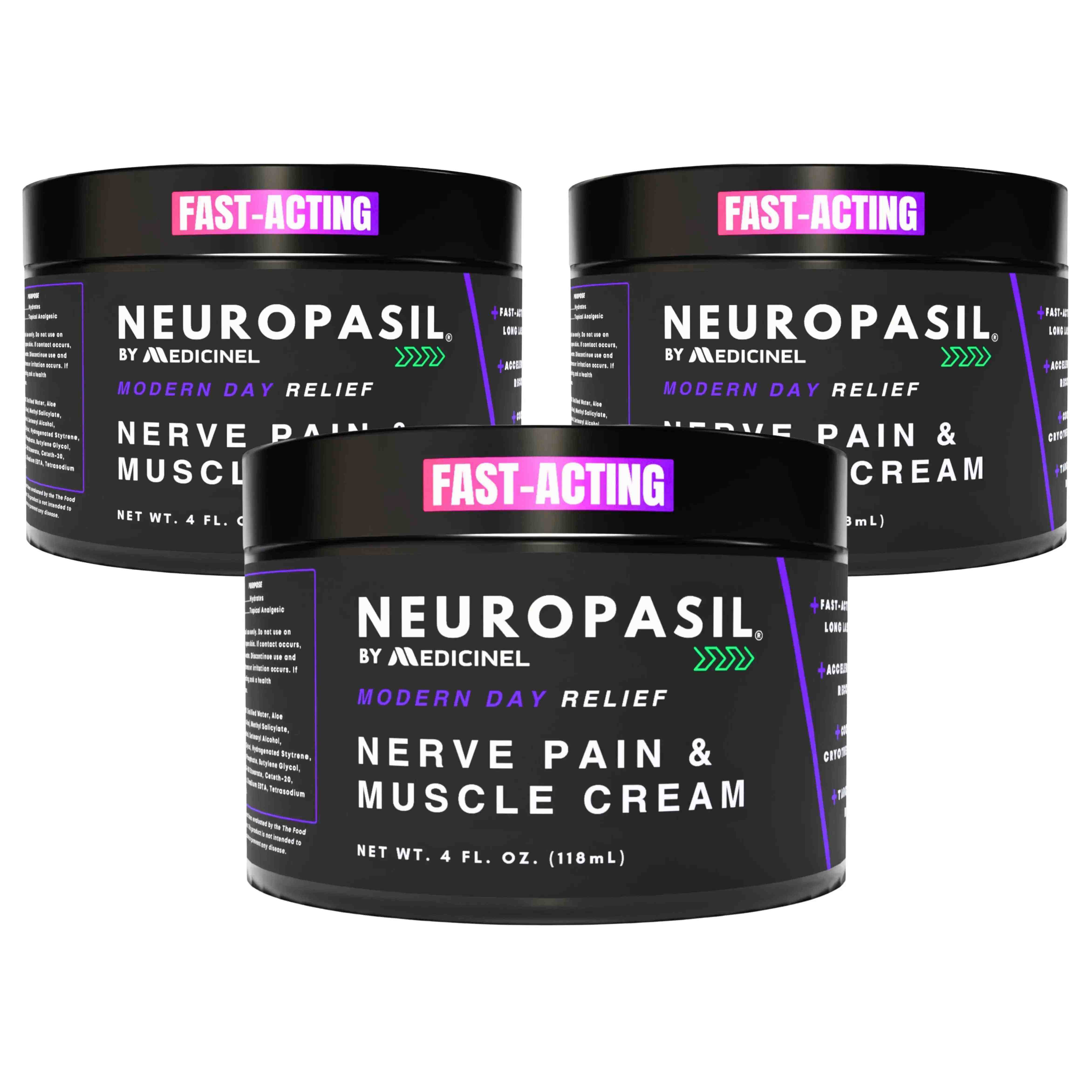Understanding Plantar Fasciitis Pain
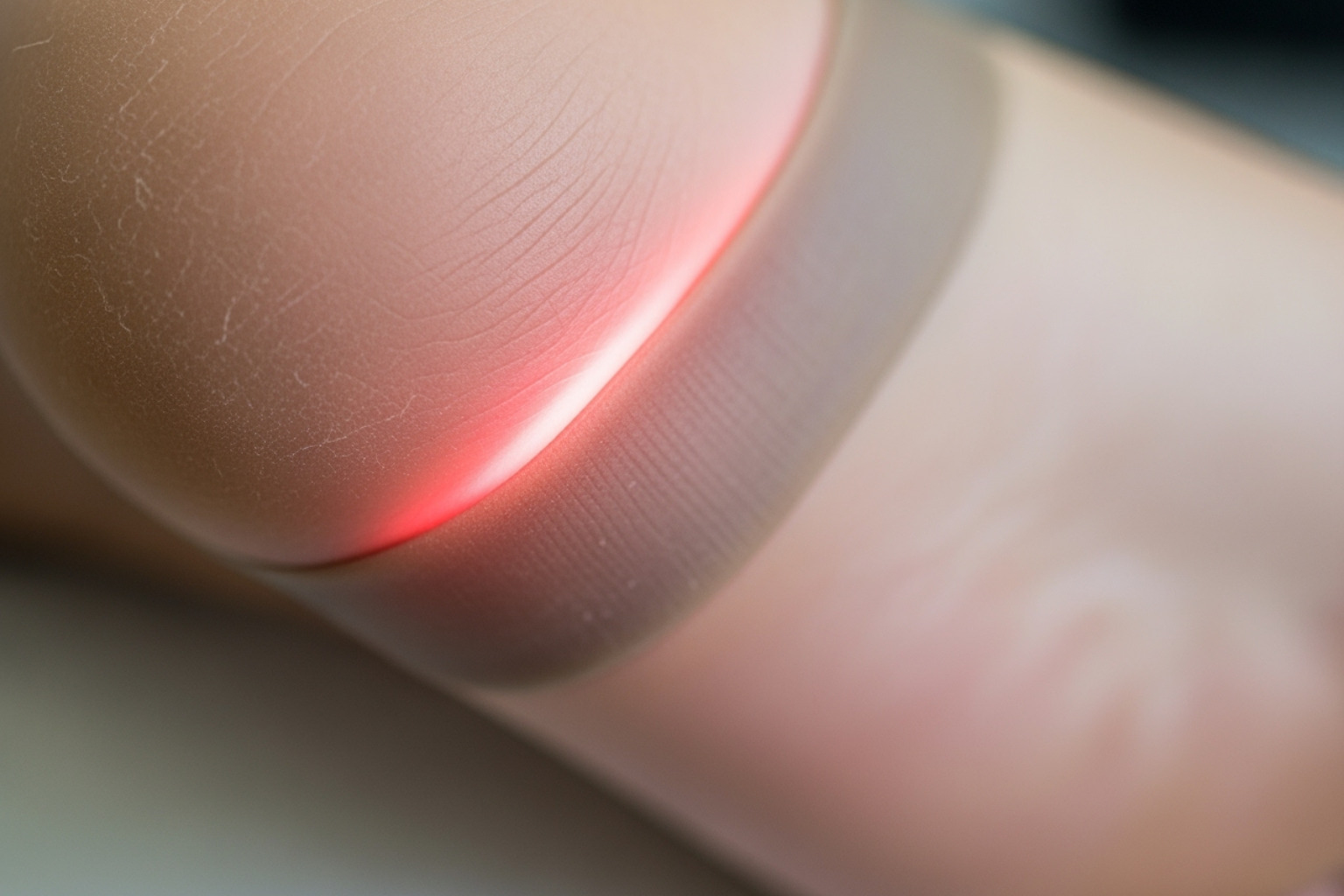
Exercises for plantar fasciitis are one of the most effective ways to reduce heel pain and get back to your normal activities. If you're dealing with that sharp, stabbing pain in your heel - especially first thing in the morning - you're not alone.
Quick Answer - Best Exercises for Plantar Fasciitis:
- Seated Plantar Fascia Stretch - Pull toes back toward shin
- Standing Calf Stretch - Wall push with straight back leg
- Bent-Knee Calf Stretch - Targets Achilles tendon
- Foot Rolling Self-Massage - Roll foot over tennis ball or frozen bottle
- Towel Curls - Scrunch towel with toes for strength
- Marble Pickups - Pick up small objects with toes
- Heel Raises on Step - Strengthen calves and plantar fascia
Plantar fasciitis affects 1 in 10 people and happens when the thick band of tissue running along the bottom of your foot (the plantar fascia) becomes inflamed or develops tiny tears. This ligament supports your arch and acts like a shock absorber.
The condition develops when this tissue gets overstretched from factors like:
- Tight calf muscles
- Being overweight
- Wearing improper footwear
- Having flat feet or high arches
- Spending long hours on your feet
The hallmark symptom is intense heel pain that's worst when you first get out of bed or after sitting for long periods. Many people describe it as feeling like they're stepping on a nail.
Research shows that both stretching and strengthening exercises can greatly reduce pain and improve walking in people with plantar fasciitis. The key is consistency - these exercises work by making the plantar fascia more flexible while strengthening the muscles that support your foot.
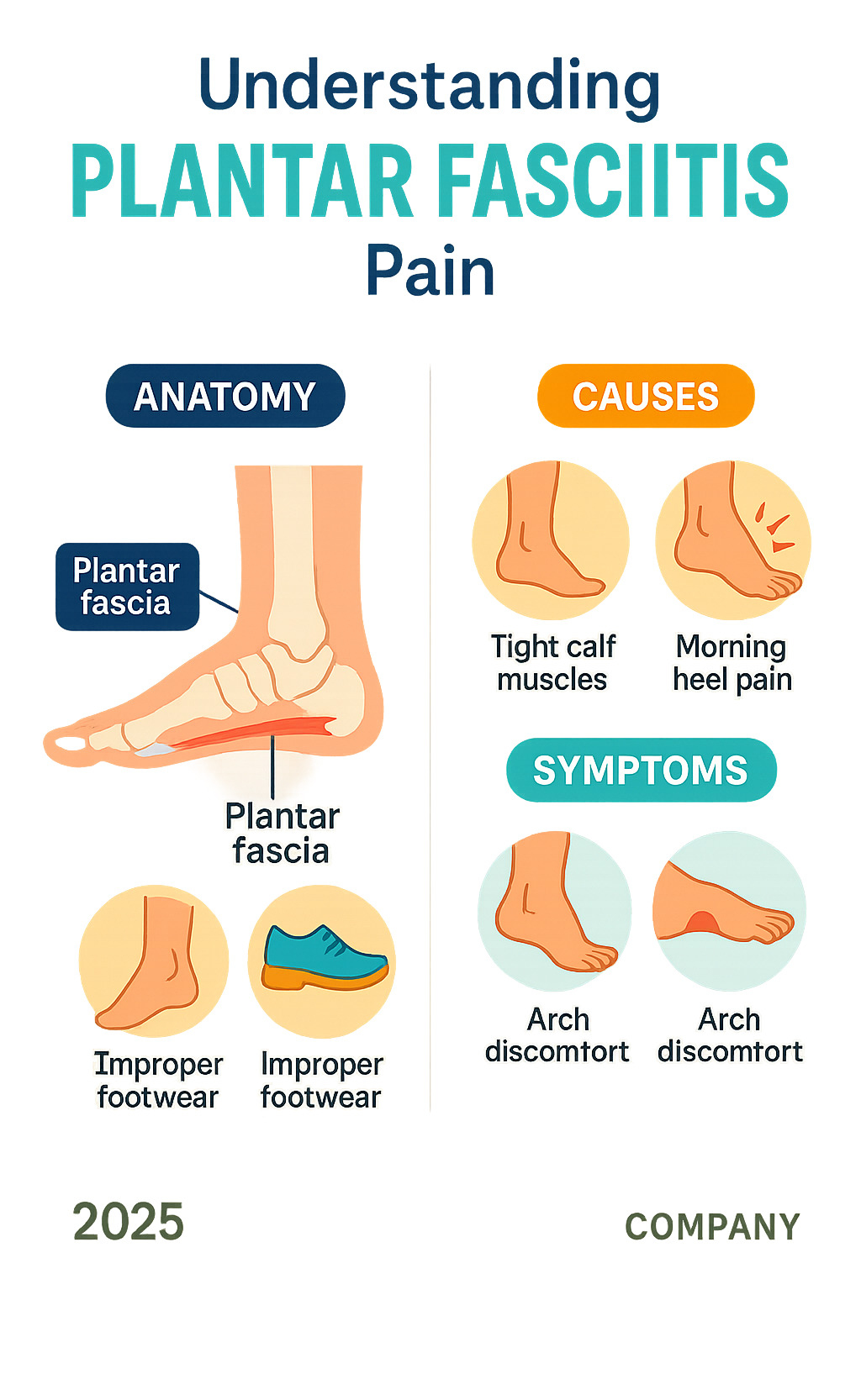
Why Stretching and Strengthening is Your First Line of Defense
Think of exercises for plantar fasciitis as your foot's personal training program. When that heel pain hits, your first instinct might be to rest completely - but the truth is, the right movements can be your most powerful ally in getting back on your feet comfortably.
Here's what makes these exercises so effective: they tackle the problem from multiple angles. Stretching reduces pain by releasing tension in the plantar fascia and surrounding muscles, while strengthening builds up the supporting cast - those smaller foot muscles that help carry the load. Together, they improve flexibility throughout your entire foot and lower leg, creating a foundation that can prevent re-injury down the road.
The research backs this up beautifully. Studies show that plantar fascia-specific stretches are highly effective at reducing pain and improving function. What's particularly interesting is that stretches targeting the plantar fascia directly tend to work better than just focusing on the Achilles tendon alone - though both are important pieces of the puzzle.
Plantar fascia-specific stretches work like a gentle reset button for that inflamed tissue. When you pull your toes back toward your shin, you're literally lengthening the fascia and helping break up any adhesions that might have formed overnight. This is why that first morning stretch can feel so relieving.
Calf and Achilles stretches are equally crucial because tight calf muscles create a domino effect. When your calves are tight, they pull on your Achilles tendon, which in turn increases tension on your plantar fascia. By loosening up this entire chain, you're giving your heel the breathing room it needs to heal.
Intrinsic foot muscle strengthening might sound fancy, but it's really about building your foot's natural shock absorption system. These small muscles help maintain your arch and distribute pressure more evenly across your foot. Think of them as your foot's built-in support crew.
Sometimes plantar fasciitis pain can feel different - more like burning, tingling, or shooting sensations rather than the typical sharp heel pain. If this sounds familiar, you might be dealing with a nerve component to your pain. Understanding nerve pain can help you recognize when additional support might be helpful for the muscle soreness that often accompanies foot issues.
The beauty of this approach is that you're not just masking symptoms - you're actually addressing the underlying issues that led to your plantar fasciitis in the first place. With consistency, these exercises can transform your feet from a source of daily frustration into the strong, flexible foundation they're meant to be.
7 Essential Exercises for Plantar Fasciitis Relief
Ready to tackle that heel pain head-on? These seven exercises for plantar fasciitis have helped countless people get back on their feet - literally! The key is making them part of your daily routine, even when you're feeling better.
1. Seated Plantar Fascia Stretch
Here's your secret weapon against morning heel pain. This stretch is so effective, you can do it before you even get out of bed!
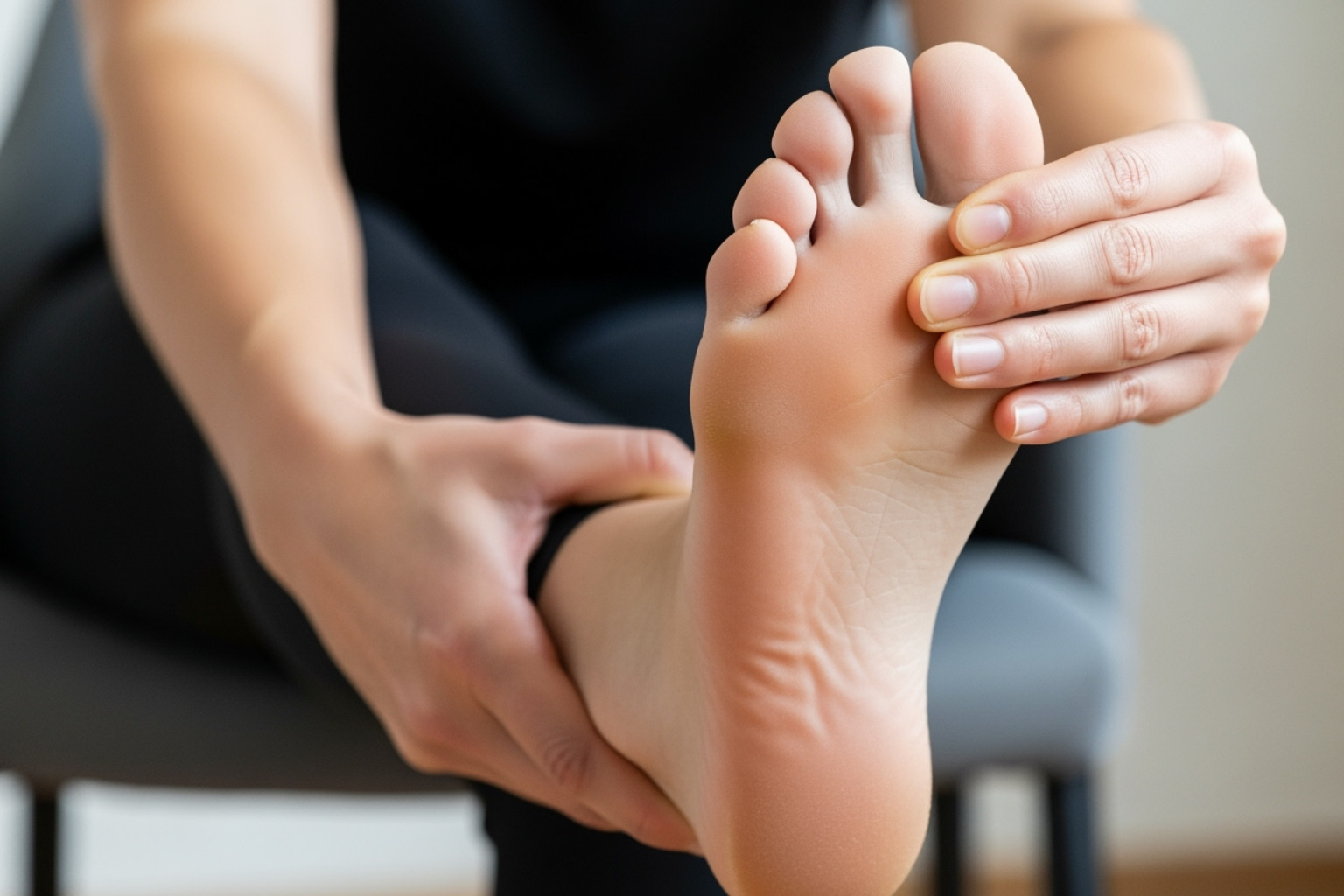
Start by sitting comfortably and crossing your affected foot over your other knee. With one hand, gently grasp your toes and pull them back toward your shin until you feel a nice stretch along your arch. You should feel it running from your heel all the way to your toes.
Hold for 30 seconds and repeat 3 times. This is honestly one of the best investments you can make in your morning routine - those first few steps out of bed will thank you!
2. Standing Calf Stretch (Gastrocnemius)
Your calf muscles and plantar fascia are best friends - when one is tight, the other suffers. This wall stretch targets that larger calf muscle that loves to get tight on us.
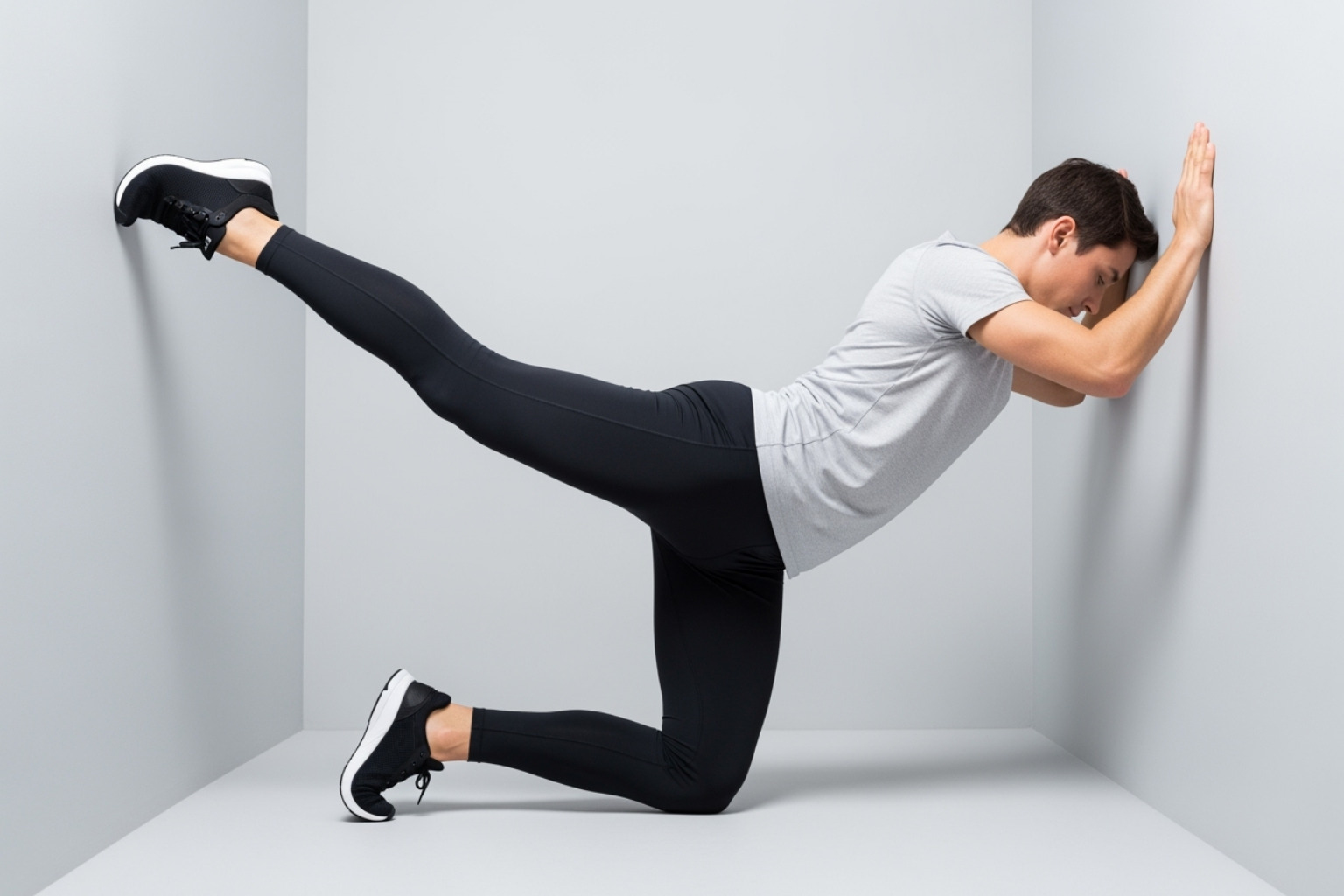
Face a wall and place your hands on it for support. Step your affected foot back while keeping that leg nice and straight. Your front foot should be closer to the wall with a slightly bent knee.
The magic happens when you keep your back heel firmly on the floor and lean forward. You should feel a good stretch in that back calf. Make sure your toes point straight ahead - no cheating by turning them out!
Hold for 30 seconds and repeat 3 times per leg. Try to do this twice daily. Some research suggests holding for 45 seconds and repeating 4-6 times throughout the day gives you even better results.
3. Bent-Knee Calf & Achilles Stretch (Soleus)
Think of this as the deeper version of your calf stretch. It targets the soleus muscle that sits underneath your main calf muscle, plus that important Achilles tendon.
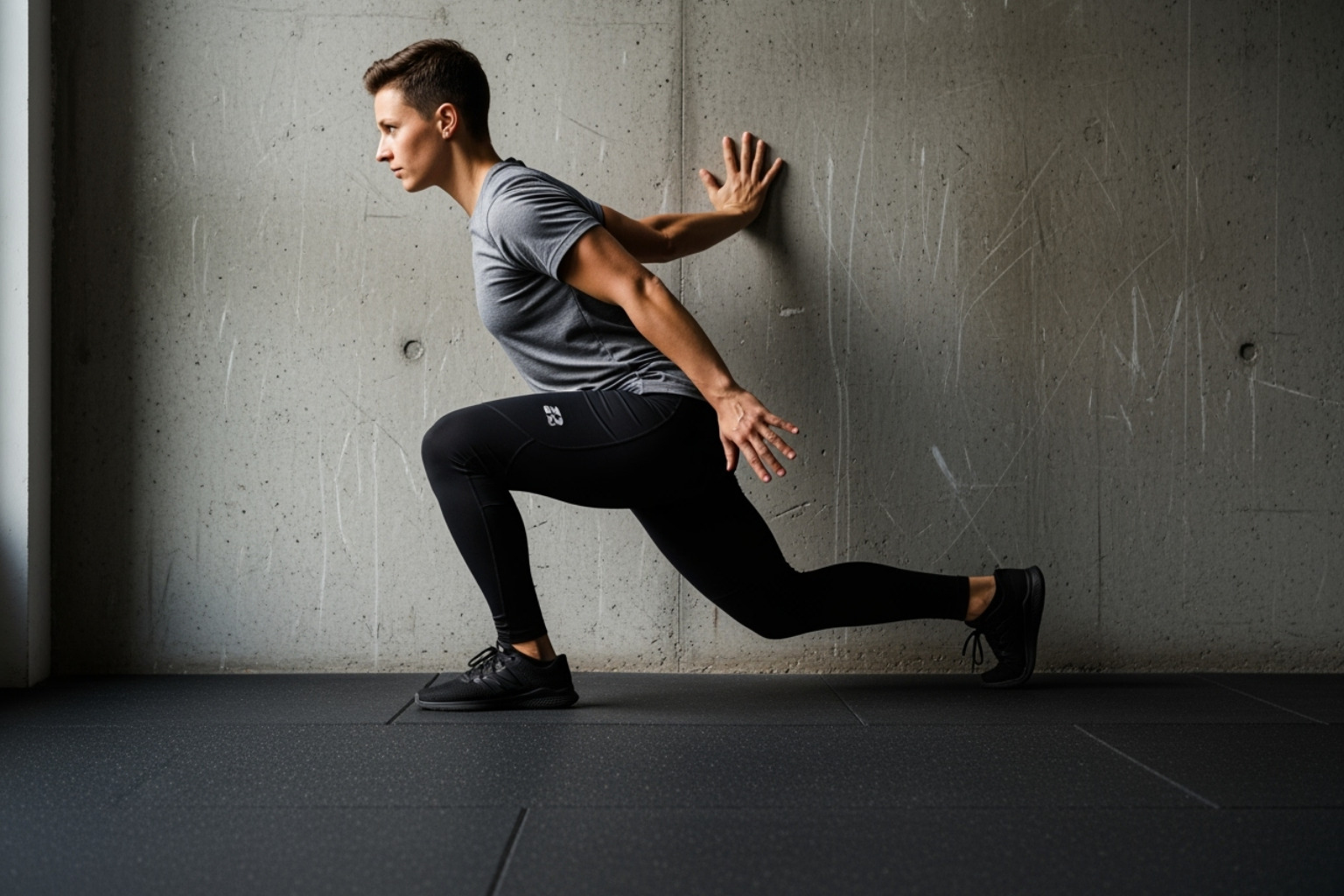
Start in the same wall position as before, but this time slightly bend the knee of your back leg while keeping that heel glued to the floor. Lean forward and you'll feel the stretch lower down in your calf and around your Achilles tendon.
Hold for 30 seconds and repeat 3 times per leg. This deeper muscle often gets overlooked, but it plays a huge role in plantar fascia tension.
4. Foot Rolling Self-Massage
This one feels as good as it sounds! You're getting a massage and inflammation control all in one exercise. It's like a spa day for your feet.
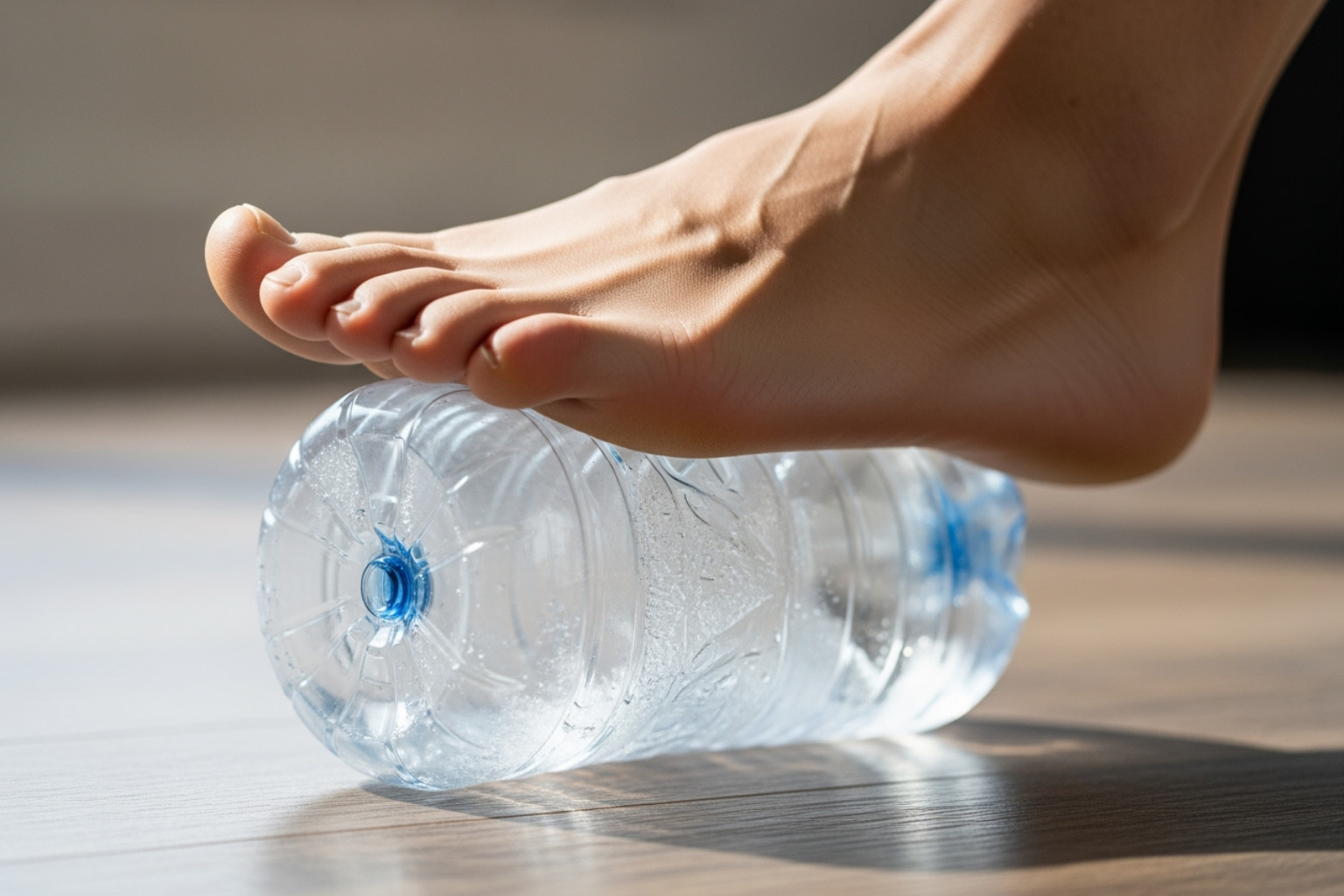
Sit in a chair and place a tennis ball, golf ball, or frozen water bottle under your foot. The frozen option gives you that extra anti-inflammatory bonus! Gently roll your foot over the object for 2-5 minutes, applying moderate pressure.
This should feel good, not painful. Think of it as giving your plantar fascia a gentle massage to help it relax and heal. Try doing this a couple of times a day, especially after you've been on your feet or sitting for a while.
5. Towel Curls for Foot Strength
Time to wake up those small muscles in your feet! These intrinsic foot muscles are like your arch's personal support team - the stronger they are, the better they can help your plantar fascia.
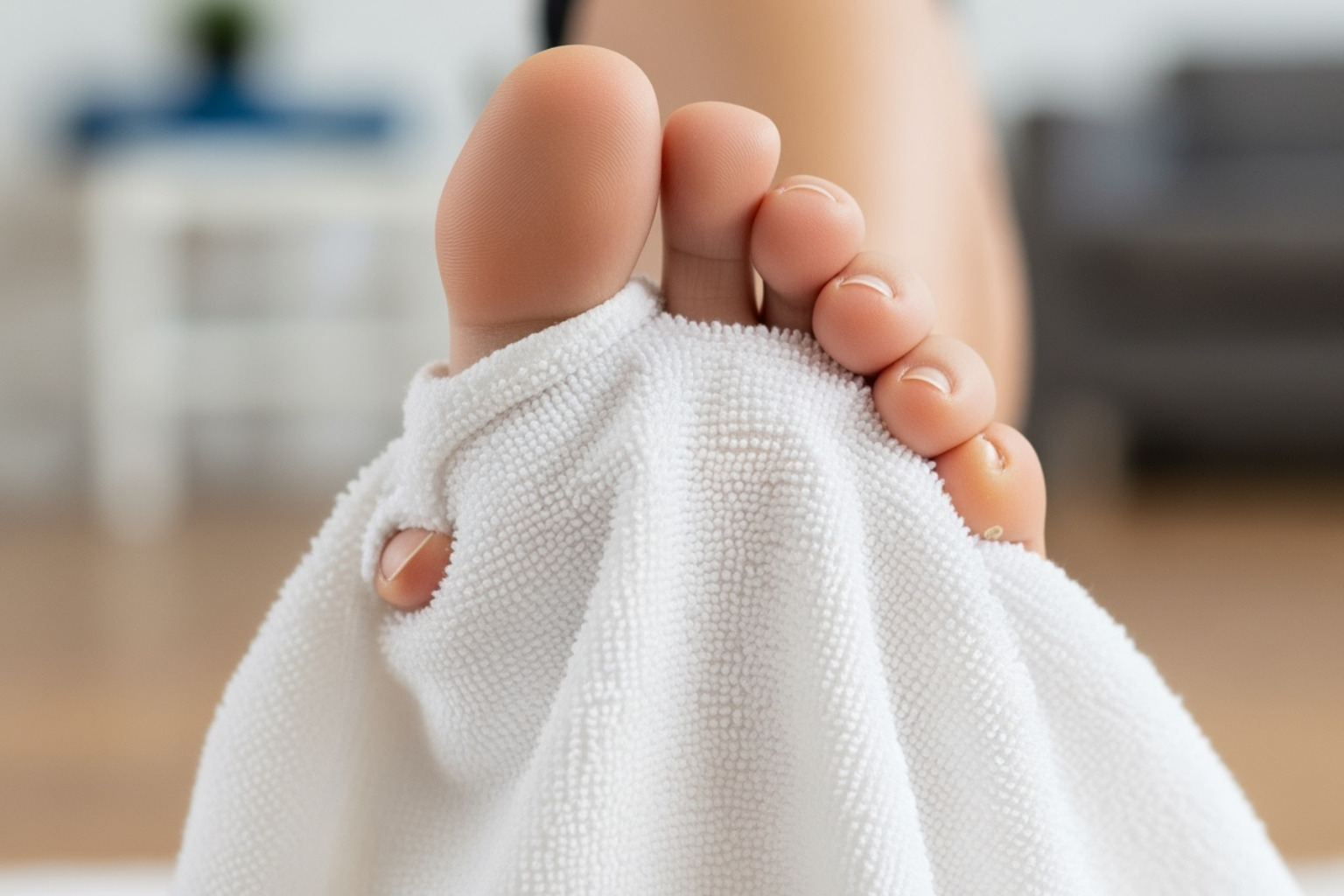
Sit with your feet flat on the floor and place a small towel in front of you. Using only your toes, scrunch the towel toward you, gathering it under your foot. Then push it back out with your toes.
Repeat 10-15 times. As you get stronger, try placing a small weight like a book on the far end of the towel for an extra challenge. This is truly one of the best strengthening exercises you can do for plantar fasciitis.
6. Marble Pickups
Who knew playing with marbles could be therapeutic? This exercise improves both the strength and coordination of your foot muscles, giving you better overall foot control.
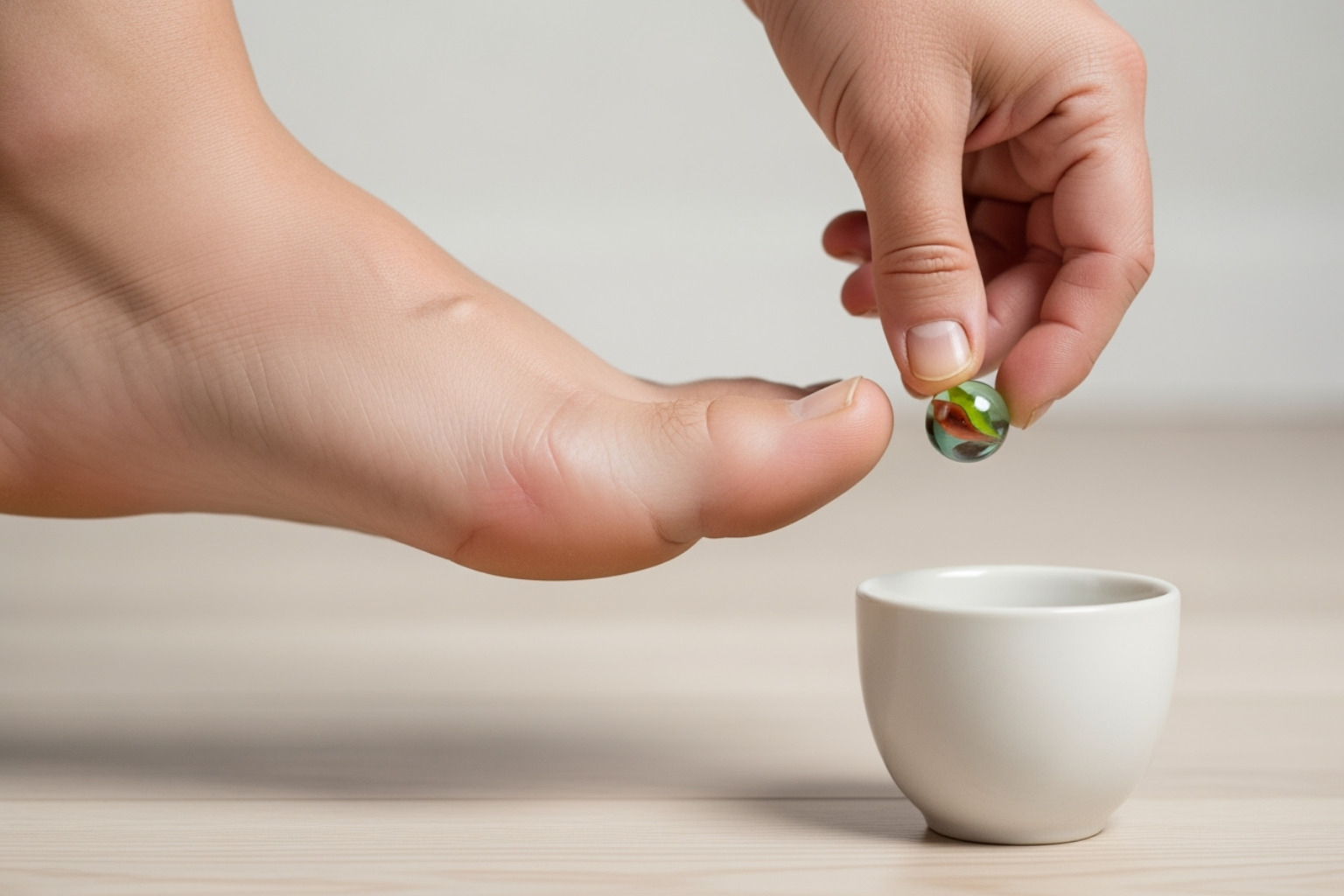
Sit in a chair with marbles scattered on the floor next to an empty cup. Use only your toes to pick up one marble at a time and carefully drop it into the cup.
Repeat 10-20 times per foot, doing this 1-2 times daily. If you don't have marbles handy, small smooth stones, dice, or even crumpled paper balls work just as well. Your toes will get surprisingly good at this!
7. Heel Raises on a Step
This powerhouse exercise strengthens both your calf muscles and your plantar fascia itself. Think of it as building resilience against future strain.
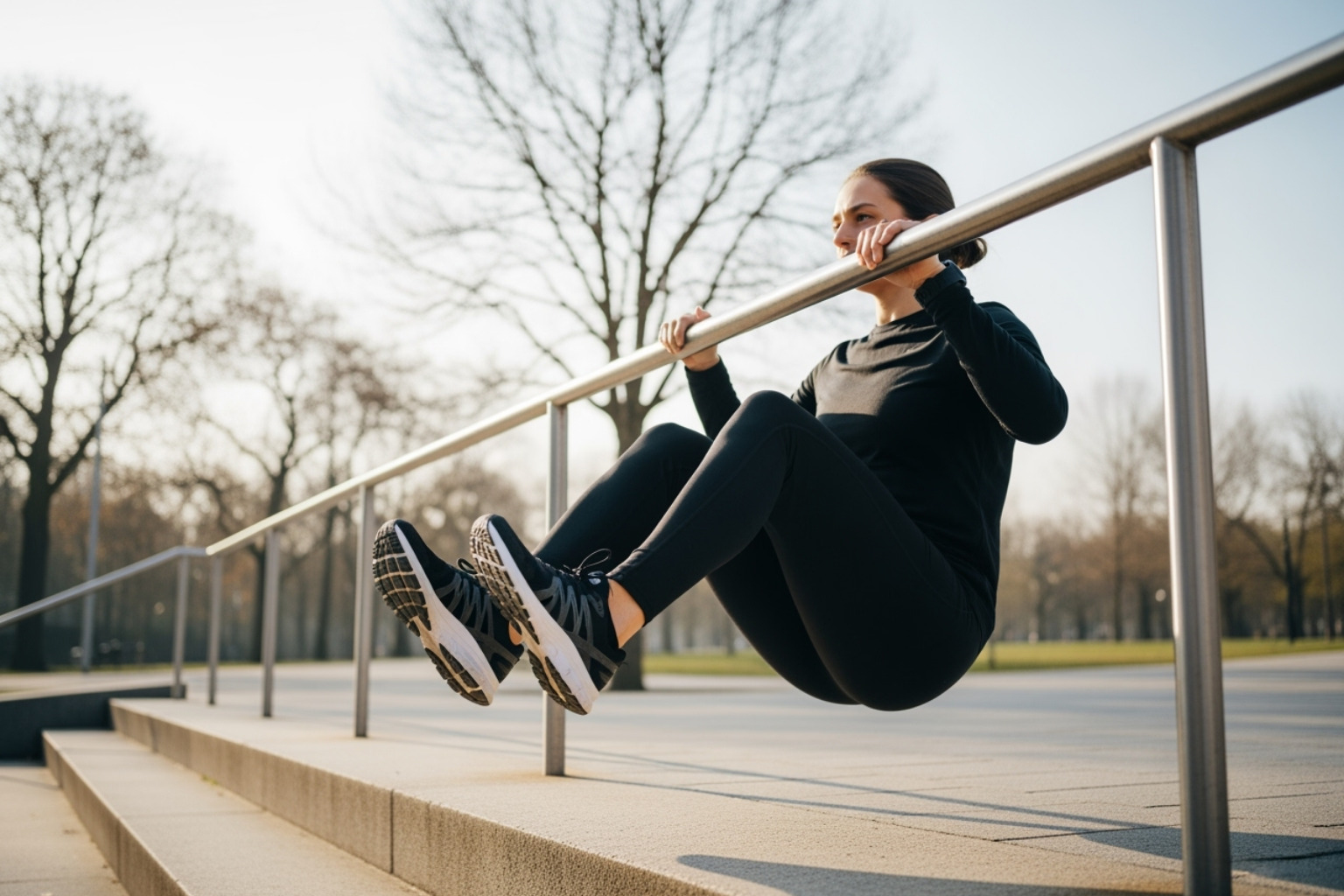
Stand on the edge of a step with the balls of your feet on the step and your heels hanging off. Hold onto a railing or wall for balance - safety first!
Slowly lower your heels below the step level until you feel a stretch in your calves. Then rise up onto the balls of your feet, lifting your heels as high as possible. Return to the starting position and repeat 10-15 times.
As you get stronger, work toward doing three sets of 15 repetitions on each leg individually. Research shows this is an excellent benchmark for building real strength in your calves and plantar fascia.
How to Perform Your Routine for Maximum Benefit
Getting the most out of your exercises for plantar fasciitis isn't just about doing them - it's about doing them consistently and correctly. Think of it like tending a garden: a little care every day yields much better results than sporadic bursts of attention.
Daily consistency is absolutely key when it comes to recovery. Your plantar fascia didn't become tight and painful overnight, and it won't heal overnight either. Most people start noticing improvements within a few weeks, but full recovery often takes several months. The good news? Even after your pain disappears, continuing these exercises acts like an insurance policy against future flare-ups.
When it comes to how long to hold your stretches, aim for 20 to 30 seconds for most stretches. For calf and Achilles stretches specifically, some research suggests holding for up to 45 seconds can be even more beneficial. Here's an important tip: avoid bouncing during stretches. That old-school "bounce into the stretch" approach can actually increase your risk of injury. Instead, ease into each position slowly and hold it steady.
Listening to your body is perhaps the most crucial skill you'll develop during your recovery. Start each exercise slowly and back off immediately if you feel sharp pain. We're aiming for a gentle stretch or strengthening sensation, not discomfort. When doing self-massage with a tennis ball or frozen bottle, apply enough pressure to feel the work happening, but never push through pain.
Your feet need support even when you're not exercising. Supportive footwear should become your new best friend - yes, even around the house. Those cozy slippers might feel nice, but walking barefoot on hard floors can undo all your good work. Proper shoes with good arch support reduce the strain on your healing plantar fascia throughout the day.
Beyond your exercise routine, several self-care strategies can accelerate your healing. Ice application for up to 20 minutes after activity helps control inflammation - and that frozen water bottle you're using for foot rolling does double duty here. Rest doesn't mean becoming a couch potato, but it does mean being smart about activities that aggravate your pain. Proper shoes with good cushioning and arch support are non-negotiable, and if you're carrying extra weight, even losing a few pounds can significantly reduce the load on your plantar fascia.
The beauty of this approach is that each element supports the others. Your daily stretches improve flexibility, strengthening exercises build resilience, proper footwear provides ongoing support, and good self-care habits create the ideal environment for healing. Stick with it - your feet will thank you.
When to See a Doctor or Physical Therapist
Most people find great success managing their heel pain with consistent exercises for plantar fasciitis and good self-care habits. But sometimes, you need to call in the professionals - and that's perfectly okay!
It's time to seek professional help if your pain hangs around after several weeks of diligent home exercises and self-care. We're talking about really giving it your best effort with stretching, strengthening, and all those other tips we've covered. If you're still hurting despite your consistency, don't feel discouraged - sometimes we just need expert guidance to get over the hump.
You should also reach out to a healthcare provider if your pain actually gets worse despite your efforts. This might mean there's something else going on that needs attention. And if the pain becomes so severe that you can't walk normally or do your daily activities, that's definitely your cue to get professional help right away.
While it's rare, watch for signs of infection like unusual redness, warmth, or swelling around your heel. These symptoms need immediate medical attention, so don't wait if you notice them.
A doctor can provide a proper diagnosis and make sure what you're dealing with is actually plantar fasciitis and not another condition that can cause similar heel pain. Sometimes conditions like heel spurs, nerve entrapment, or stress fractures can masquerade as plantar fasciitis.
Physical therapists are movement experts who can take your recovery to the next level. They'll watch how you walk and move, spot specific muscle imbalances you might not even know you have, and create a personalized exercise plan that's perfectly custom to your needs. They can also teach you proper techniques for foot taping, recommend the right shoe inserts, and make sure you're doing all those exercises correctly to get the maximum benefit.
Think of working with a physical therapist as having a coach for your feet - someone who can guide you through a step-by-step rehabilitation program and adjust it as you improve. They can also assess your entire movement chain, since sometimes the root cause of plantar fasciitis lies in how other parts of your body are functioning.
Ready to get professional help? You can find a physical therapist in your area to get started on a custom treatment plan that's designed just for you.
Frequently Asked Questions about Exercises for Plantar Fasciitis
We get a lot of questions from people dealing with heel pain, and honestly, it makes perfect sense. When you're hobbling around first thing in the morning or wincing with every step, you want to know exactly what to expect. Let's tackle the most common concerns we hear.
How long does it take for these exercises to work?
Here's the truth - it really does vary from person to person. Some lucky folks start feeling better within a few weeks of doing their exercises for plantar fasciitis consistently. But for most people, noticeable improvement typically happens around the four to six week mark, and full recovery? That can take several months.
I know that might sound discouraging, especially when you're in pain right now. But here's what we've learned from research and experience: consistency is absolutely the most important factor for success with exercises for plantar fasciitis. The people who stick with their routine every single day - even when they don't feel like it - are the ones who see the best results.
Think of it like training for a marathon. You wouldn't expect to run 26 miles after just a week of training, right? Your plantar fascia needs time to heal and strengthen too.
Should I exercise if my plantar fasciitis hurts?
This is probably our most frequently asked question, and the short answer is: gentle stretching and massage are usually perfectly fine. In fact, we often encourage them because they help loosen up that tight plantar fascia and those stubborn calf muscles.
But - and this is important - you need to avoid any activities that cause sharp pain. Your body has a pretty good warning system, and sharp pain is definitely a red flag. The moment any exercise increases your pain, stop immediately.
The goal here is to relieve tension and help your foot heal, not to push through pain like some kind of foot warrior. Apply just enough pressure to feel a gentle stretch - it should feel good, not make you grit your teeth.
What exercises should I avoid with plantar fasciitis?
When your plantar fascia is angry and inflamed, high-impact activities are definitely not your friend. We're talking about running, jumping, and sports played on hard surfaces like basketball or tennis courts. These activities can be like adding fuel to the fire.
You'll also want to avoid walking barefoot on hard floors until your pain has calmed down significantly. I know it feels freeing to kick off your shoes at home, but those hard surfaces offer zero support or cushioning for your already irritated plantar fascia.
Instead, focus on the gentle stretches and strengthening exercises we've covered. These are specifically designed to support your healing journey without making things worse. Your feet will thank you for the patience.
Conclusion: Taking the Next Step Towards Pain-Free Feet
You've made it this far, and that tells me you're serious about beating plantar fasciitis pain. That's wonderful! The truth is, effective relief really is within your reach - you just need the right approach and a good dose of patience.
The most important thing to remember? Consistency with your stretching and strengthening exercises for plantar fasciitis is absolutely vital. I can't stress this enough. These aren't one-and-done solutions - they're daily habits that will transform how your feet feel and function.
Listen to your body as you work through these exercises. Some days will feel better than others, and that's completely normal. The goal isn't to push through sharp pain, but to gently coax your plantar fascia back to health through regular, mindful movement.
Combine these exercises with other self-care measures for the best results. That means icing when you're sore, getting proper rest when you need it, and investing in supportive footwear that actually helps your feet instead of hurting them. Think of it as creating a complete healing environment for your feet.
Sometimes the muscle soreness that comes along with plantar fasciitis can add another layer of discomfort to your recovery journey. Neuropasil topical creams can provide complementary relief for this associated muscle soreness, helping you stay more comfortable as you heal. Our specialized formulas are designed specifically for nerve pain and muscle relief.
Long-term wellness is just as important as immediate pain relief. This means making smart choices about proper footwear - yes, even around the house - and maintaining a healthy weight to reduce the load on your feet. These aren't just suggestions; they're investments in pain-free tomorrows.
The journey back to comfortable, pain-free feet takes time, but every stretch, every strengthening exercise, and every day of consistency brings you closer to that goal. You don't have to live with this pain forever. With dedication to these proven exercises for plantar fasciitis and a commitment to overall foot health, you'll be back to enjoying active, comfortable days ahead.
Find how to get nerve pain relief with Neuropasil and take that next confident step toward the pain-free life you deserve.










